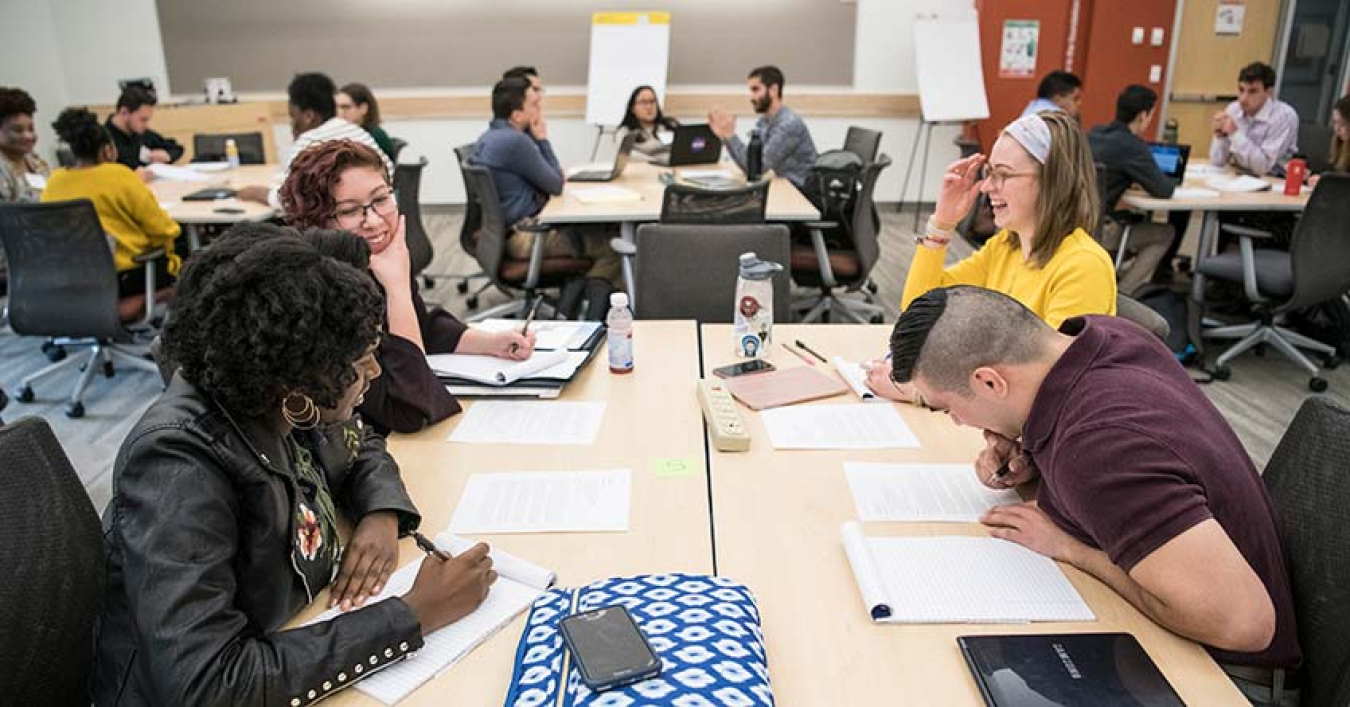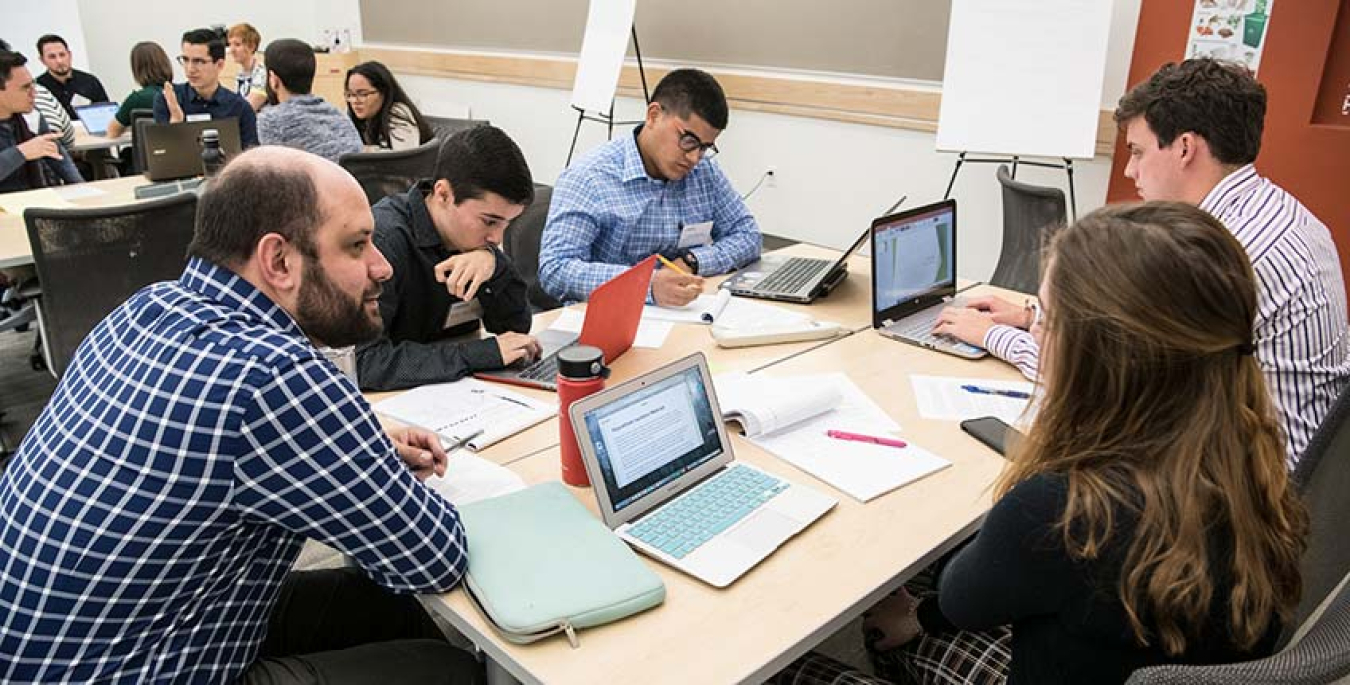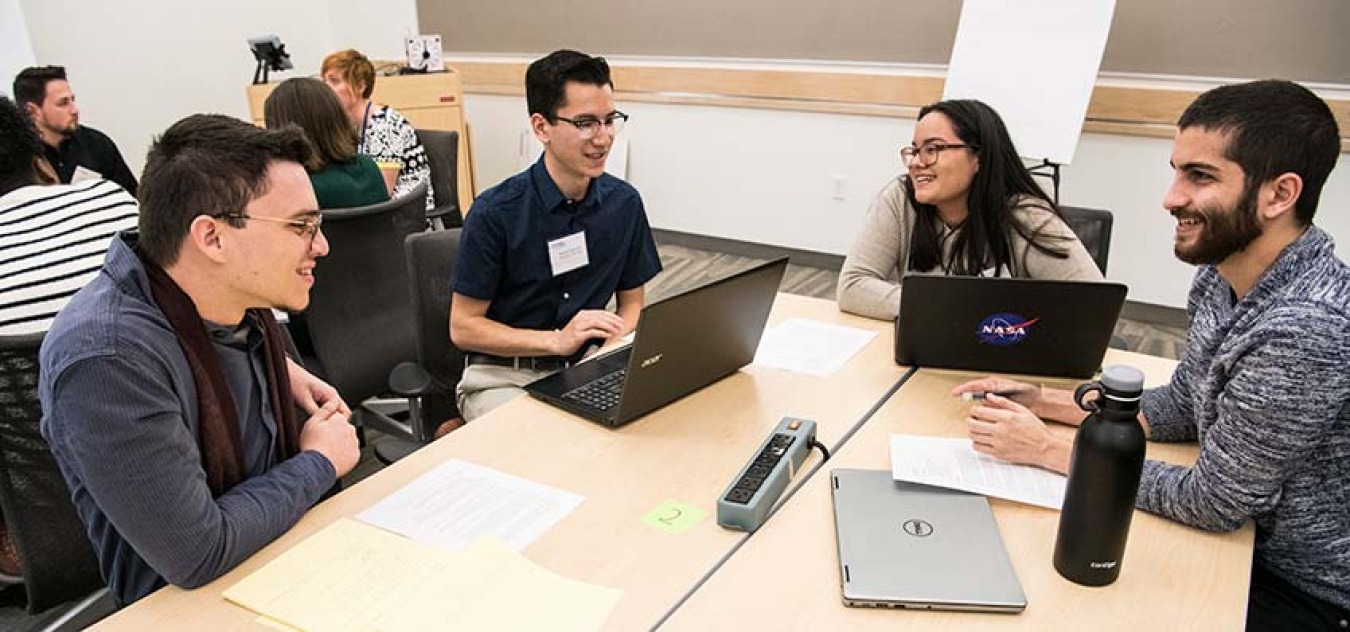On January 9, a group of 20 undergraduate students from around the country participated in a mini-hackathon that melded their ingenuity and the lesson
February 13, 2019
Editor's note: this was originally posted by the National Energy Renewable Laboratory.
During the mini-hackathon, students were challenged to design a wall retrofit to improve residential energy efficiency. While some professionals spend a career on this issue, the students were given just 80 minutes. Students were divided into teams of four and asked to design a wall retrofit product that would improve building energy efficiency and indoor air quality, identify a product testing plan and market strategy, and give a five-minute impromptu presentation on their ideas.
Throughout the short 80 minutes, a team of U.S. Department of Energy staff and researchers from the National Renewable Energy Laboratory (NREL) provided mentoring to participants. With guidance from these industry experts, students learned about the real-world applicability of building science.
One of the hackathon judges was Roderick Jackson, buildings research laboratory program manager at NREL. "Interacting with the students through this program is energizing for those of us who work in this research space every day," he said. "Opportunities like this one are always an ideal way for them to get hands-on exposure."

Jackson was particularly pleased the students got the chance to tackle a real-world building science and integration challenge. NREL researchers understand the importance of designing retrofit products like this to make existing buildings more energy efficient. Posing students with challenges like this allows them to think about real issues faced in this industry and how to create viable solutions. This experience helped students develop the critical thinking skills needed to pursue a career in building science.
Kim Trenbath, an industrial engineer at NREL, wants the hackathon to provide students with a challenging yet engaging and fun experience. “We want to encourage talented students from a variety of backgrounds to pursue studies in building sciences,” she said. “The hackathon exposed future NREL interns to building envelope design challenges and how building research can have direct impact on the lives of many. It’s a great way to introduce students to this field.”

The mini-hackathon was part of a three-day intensive Mini-Semester Program at NREL designed to introduce underrepresented minority students to NREL research through experiential opportunities.
Other activities included expansive tours of NREL’s facilities, overviews and panel discussions from researchers, a special presentation from NREL Director Martin Keller and associate laboratory directors, and the opportunity to participate in numerous hands-on activities featuring a range of NREL's technology areas.
NREL is anticipating that several of these students will also participate in the Department of Energy Office of Science summer Science Undergraduate Laboratory Internship and Community College Internship programs. This means they could be back on campus very soon helping NREL researchers transform energy.
Learn more about NREL's opportunities for students and buildings research.

